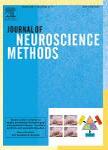版权所有:内蒙古大学图书馆 技术提供:维普资讯• 智图
内蒙古自治区呼和浩特市赛罕区大学西街235号 邮编: 010021

作者机构:Albert Einstein Coll Med Radiol Gruss Magnet Resonance Res Ctr 1300 Morris Pk Ave Bronx NY 10461 USA Albert Einstein Coll Med Dept Epidemiol & Populat Hlth 1300 Morris Pk Ave Bronx NY 10461 USA Albert Einstein Coll Med Dept Physiol & Biophys 1300 Morris Pk Ave Bronx NY 10461 USA Albert Einstein Coll Med Dept Psychiat & Behav Sci 1300 Morris Pk Ave Bronx NY 10461 USA Albert Einstein Coll Med Dominick P Purpura Dept Neurosci 1300 Morris Pk Ave Bronx NY 10461 USA Montefiore Med Ctr Dept Radiol 111 E 210th St Bronx NY 10467 USA
出 版 物:《JOURNAL OF NEUROSCIENCE METHODS》 (神经科学方法杂志)
年 卷 期:2016年第270卷第0期
页 面:156-164页
核心收录:
学科分类:0710[理学-生物学] 1002[医学-临床医学] 1001[医学-基础医学(可授医学、理学学位)] 10[医学]
基 金:Dana Foundation David Mahoney Neuroimaging Program NIH/NINDS [R01 NS082432]
主 题:Gaussian mixture model Density function estimation Aging effects Fractional anisotropy Diffusion tensor imaging
摘 要:Background: Magnetic resonance imaging reveals macro- and microstructural correlates of neurodegeneration, which are often assessed using voxel-by-voxel t-tests for comparing mean image intensities measured by fractional anisotropy (FA) between cases and controls or regression analysis for associating mean intensity with putative risk factors. This analytic strategy focusing on mean intensity in individual voxels, however, fails to account for change in distribution of image intensities due to disease. New method: We propose a method that aims to facilitate simple and clear characterization of underlying distribution. Our method consists of two steps: subject-level (Step 1) and group-level or a specific risk level density function estimation across subjects (Step 2). Results: The proposed method was demonstrated with a simulated data set and real FA data sets from two white matter tracts, where the proposed method successfully detected any departure of the FA distribution from the normal state by disease: p 0.001 for simulated data;p = 0.047 for the posterior limb of internal capsule;p = 0.06 for the posterior thalamic radiation. Comparison with existing method(s): The proposed method found significant disease effect (p 0.001) while conventional 2-group t-test focused only on mean intensity did not (p = 0.61) in a simulation study. While significant age effects were found for each white matter tract from conventional linear model analysis with real FA data, the proposed method further confirmed that aging also triggers distribution wide change. Conclusion: Our proposed method is powerful for detection of risk factors associated with any type of microstructural neurodegenerations with brain imaging data. (C) 2016 Elsevier B.V. All rights reserved.